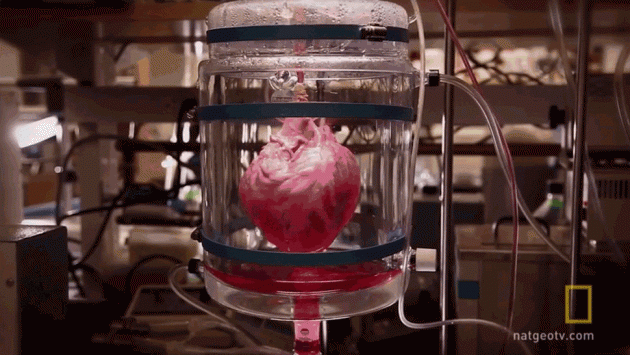Scientists Grew Human Heart Tissue. And It BEATS!
2013.08.14

We just posted that scientists have successfully 3d printed living human kidneys. A new report in Nature is giving another wave of good news in the future of organ transplants. A research team has been able to grow human heart tissue that beats autonomously in its petri dish home.
The tissue comes from induced pluripotent stem cells (iPSCs), and started as mature human skin cells and effectively "reprogrammed" back to an embroynic state. It was then coaxed into becoming the desired cell. The same method has been used recently to grow human teeth from urine.
According to senior investigator Lei Yang, Ph.D. and assistant professor of developmental biology at the Pitt School of Medicine:
This process makes MCPs, which are precursor cells that can further differentiate into three kinds of cells the heart uses, including cardiomyocytes, endothelial cells, and smooth muscle cells. Nobody has tried using these MCPs for heart regeneration before. It turns out that the heart's extracellular matrix – the material that is the substrate of heart scaffold – can send signals to guide the MCPs into becoming the specialized cells that are needed for proper heart function.
Researchers experimented with a mouse's heart, which was fully rebuilt with human cells. It was beating on its own again at a rate of 40 to 50 beats per minute. It's an achievement but it isn't quite yet fit to pump blood throughout the human body just yet. Still, a wave of good news, like we said. [Nature via The Verge Unrelated beating heart graphic via National Geographic]
More Articles
Copyright © Fooyoh.com All rights reserved.